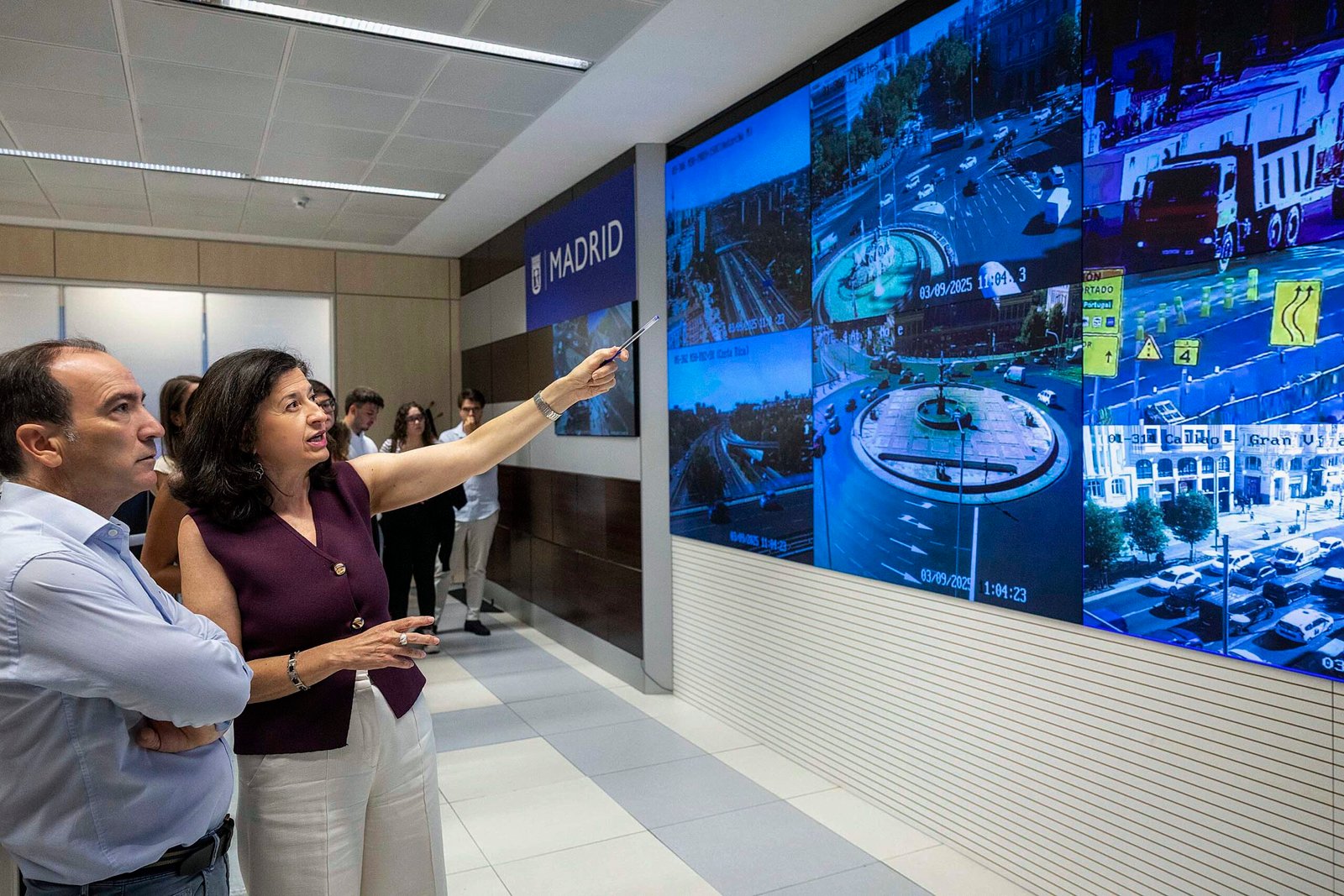The mayor of Madrid, José Luis Martínez-Almeida, visited the facilities of the EMT Madrid Operations Center in Carabanchel this morning. Accompanied by the delegate of Urbanism, Environment, and Mobility, Borja Carabante, and the district councilor, Carlos Izquierdo, he had the opportunity to get a close look at the electric buses that have been added to the municipal fleet in recent weeks.
Martínez-Almeida highlighted that "the municipal company has now exceeded 450 zero-emission buses thanks to the arrival of the latest vehicles that are being put into circulation, reaching 20% of the fleet." He also mentioned the "unprecedented budgetary effort" made by the City of Madrid in recent years, with an investment exceeding 250 million euros, "to make Madrid the only European capital with a 100% clean fleet," with no diesel buses circulating on the city streets, "and to provide citizens with the best mobility and air quality conditions."
He also expressed gratitude to the citizens of Madrid for their "trust in public transport, which has allowed us to break a new record of users last month" with more than 47.5 million people "choosing any of the 2,000 buses that circulate daily on the streets of Madrid," in addition to the 1.3 million users of Bicimad.
The constant addition of new models to the municipal fleet has resulted in 45 fully electrified EMT Madrid lines to date. The latest lines to incorporate exclusively electric buses are 22, 87, 108, and most recently, 121.
The arrival of electric models in the Madrid fleet has been a gradual process that the municipal company has been immersed in since 2008, the year of the debut of the first electric line – the M1 between Sol/Sevilla and Embajadores – with a set of 20 vehicles from the Italian manufacturer Tecnobus, which have now been amortized and decommissioned.
Since then, EMT Madrid has sought reliable mobile equipment suppliers in the industry to advance its electrification strategy, accelerating the purchasing process in the last five years with the incorporation of increasingly sustainable and technologically advanced bus models tailored to the characteristics and demands of Madrid.
Suppliers
In the roster of EMT Madrid suppliers, the national manufacturer Irizar has supplied the most electric units to the capital to date: a total of 193 buses from this Basque company have been operational since 2018.
The initial Irizar I2E models consisted of a group of 35 standard units, delivered between 2018 and 2020. Subsequently, Irizar supplied EMT Madrid with the IeBUS model (a total of 146 vehicles) between 2021 and 2025. The latest model to join the municipal fleet is the innovative IeTRAM, with its futuristic tram-like appearance, which began operating in 2023 on Madrid’s first rapid bus line, connecting the Valdebebas neighborhood with the Ramón y Cajal hospital center along a 38-stop route. The municipal company currently operates 12 units of this pioneering bus.
Solaris and BYD are also among the suppliers that have been manufacturing electric buses for Madrid in recent years. The Chinese manufacturer BYD has supplied EMT Madrid with a quota of 115 K9UB model buses since 2020. The municipal company also has a total of 90 Solaris Urbino 12 units (12 meters, standard) and 20 more Solaris Urbino 9 units (9.27-meter midibuses). These vehicles have been integrated into the EMT Madrid fleet from 2023 to the present year.
The shortest in length in the entire fleet (around 6 meters) are those bearing the Carbus Wolta (18 units) and Rampini E60 (six units) manufacturers’ labels, which have been operating in Madrid since 2019 and have been specially designed to navigate the narrow and winding streets of the city center.
In the array of EMT Madrid models, the first ten hydrogen-powered buses in the city have taken on a special role. Manufactured by CaetanoBus, the standard Citygold H2 model is also plug-in like other electric buses, with the distinction of generating its own clean electricity through a green hydrogen fuel cell.
Over the past five years, the fleet electrification process has been supported by the European Union through the NextGenerationEU funds. In line with the community’s economic and ecological priorities and within the framework of the Recovery, Transformation, and Resilience Plan, the EU has contributed to financing this latest phase of modernizing the Madrid public fleet by subsidizing over 300 100% electric buses. This has allowed the municipal company to solidify its goal of becoming a green and decarbonized entity with an environmentally sustainable energy model.
Transformation and electrification of operations centers
Decarbonization has been a key objective of the City and EMT Madrid within the Madrid 360 Environmental Sustainability Strategy. In this decarbonization process, technological advancements and the use of clean, sustainable, and renewable energy sources are crucial.
To supply energy to this decarbonized fleet, EMT Madrid is transforming its operations centers, with Carabanchel standing out as a reference in electrification. Smart electric charging points using inverted pantograph technology allow for charging without the need for operator intervention or driver wait times.
The Entrevías Operations Center has had a hydrogen station for months to power the ten new hydrogen-powered buses. The installation covers the entire cycle of this energy vector, including production, compression, storage, and distribution. To provide sufficient energy to the hydrogen station, the project includes 2,780 photovoltaic panels distributed across three structures.
On the other hand, the La Elipa Operations Center will become a benchmark facility for managing a 100% electric fleet, and the Fuencarral center has launched an innovative smart electric charging project, an automated system that optimizes the process, making it more efficient, faster, and sustainable. /



